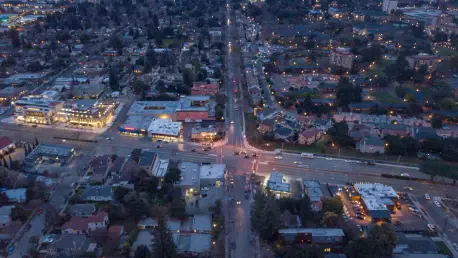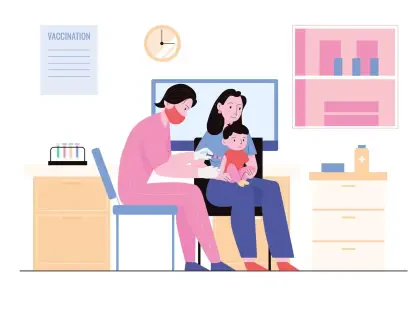Palo Alto, California, stands at a crossroads of urban transformation, eyeing a dramatic shift for the industrial corridor along San Antonio Road, often dubbed a “concrete jungle” due to its stark, unwelcoming landscape. Nestled between Alma Street and U.S. Highway 101 near the Mountain View border, this area is the centerpiece of the San Antonio Road Area Plan, a city-led initiative aiming to morph it into a thriving, mixed-use neighborhood. The ultimate ambition is to embody the “15-minute city” model, where residents can reach essential services, schools, and recreation within a short walk or bike ride. Yet, this vision faces significant hurdles, including a dire housing shortage, persistent traffic safety concerns, and complex regional dynamics that challenge local control. As Palo Alto pushes to add over 1,500 housing units by 2028, the question looms whether such an industrial zone can truly become a beacon of livability and sustainability amidst these obstacles.
Reimagining Urban Space Through Housing
The heart of the San Antonio Road Area Plan lies in addressing Palo Alto’s chronic housing shortage, a problem that has deepened affordability issues across the region. With a target of over 1,500 new units by 2028, the city aims to shift this industrial stretch into a residential hub, moving away from its current sparse contribution to housing stock. Vice Mayor Vicki Veenker has emphasized the potential of this redevelopment to tackle visible challenges like RV homelessness, which plagues the area as a symptom of broader housing scarcity. By prioritizing denser, mid-rise developments, the plan seeks to create a foundation for a sustainable community that not only houses more people but also fosters a sense of belonging in a part of the city long dominated by cold, industrial facades. This focus on residential growth is seen as a critical step toward balancing the needs of a growing population with the constraints of limited urban space.
Beyond just numbers, the housing push carries deeper social implications for Palo Alto’s future. The initiative isn’t merely about constructing buildings; it’s about crafting neighborhoods that can support diverse residents, from families to individuals facing economic hardship. City leaders view this as a chance to address systemic issues like inequality and displacement that have long affected the area. The emphasis on mid-rise structures reflects a deliberate choice to maximize land use while avoiding the towering high-rises that might clash with Palo Alto’s character. Moreover, integrating housing with community-focused design could help alleviate the isolation often felt in industrial zones, paving the way for a more connected urban fabric. As the plan unfolds, the success of these housing efforts will likely hinge on whether they can deliver affordability alongside density, ensuring that the transformation benefits a wide swath of the community rather than a select few.
Prioritizing Safety and Seamless Mobility
Traffic safety looms large over the San Antonio Road area, where a mere fraction of Palo Alto’s housing accounts for an outsized share of serious and fatal collisions. The Existing Conditions Analysis, a key report guiding the redevelopment, underscores the urgent need for improved pedestrian and cyclist infrastructure to curb these alarming statistics. City officials are particularly focused on creating safer crossings and pathways, a concern echoed by council member Julie Lythcott-Haims, who has pointed out the risks faced by schoolchildren navigating to nearby districts like Los Altos and Mountain View. Enhancing connections to Caltrain stations and local retail centers is also a priority, aiming to reduce reliance on cars in an area notorious for hazardous conditions. This focus on mobility isn’t just about safety—it’s about redefining how residents interact with their surroundings.
Equally important is the broader vision of accessibility that underpins these safety improvements. The plan seeks to weave a network of bike lanes and walkable routes that link residents to essential destinations, fundamentally altering the area’s car-centric layout. Senior planner Robert Cain has stressed the importance of integrating these changes with existing transit options to create a seamless experience for commuters and locals alike. For families, safer routes to schools could mean less stress and more community engagement, while better access to amenities might encourage a shift toward sustainable lifestyles. However, achieving this requires overcoming entrenched challenges, such as redesigning intersections and securing funding for infrastructure upgrades. As the city moves forward, the effectiveness of these mobility enhancements will be a key measure of whether the area can shed its dangerous reputation and emerge as a model for urban safety.
Striking a Balance Between Jobs and Residences
One of the most contentious aspects of the San Antonio Road Area Plan is the debate over office space versus residential development. Early proposals for mixed-use commercial zones sparked significant pushback from the City Council, with members like Pat Burt highlighting the existing jobs-housing imbalance that burdens Palo Alto and neighboring Mountain View. This imbalance, where job growth outpaces housing availability, fuels long commutes and traffic congestion, undermining quality of life. With developable land at a premium, council members argue that adding more offices would only deepen these issues, diverting resources from the pressing need for homes. The consensus leans heavily toward prioritizing residential units, reflecting a strategic choice to reshape the area’s economic role in favor of livability over corporate expansion.
This resistance to office development also speaks to broader regional trends where cities grapple with the fallout of unchecked commercial growth. In Palo Alto, the decision to focus on housing signals a shift away from past patterns that favored job centers at the expense of residential needs. Council member Keith Reckdahl has noted that perpetuating this imbalance risks alienating residents who already face soaring costs and limited housing options. Instead, the plan aims to create a neighborhood where people can live closer to their workplaces, ideally reducing the strain on transportation networks. Yet, this approach isn’t without risks, as sidelining commercial development could limit economic vitality in the area. Balancing these competing interests will require careful planning to ensure that the focus on housing doesn’t stifle other forms of growth, maintaining a dynamic urban environment as the redevelopment progresses.
Envisioning a Walkable, Sustainable Future
Central to the transformation of San Antonio Road is the aspirational concept of a “15-minute city,” a model where residents can access work, education, shopping, and leisure within a brief walk or bike ride. Championed by council member Julie Lythcott-Haims, this vision seeks to turn an industrial wasteland into a vibrant, interconnected community that counters modern urban woes like climate change and social disconnection. It’s a framework that prioritizes human-scale design, encouraging healthier lifestyles through reduced car dependency and more green spaces. Council member Greer Stone has expressed optimism about the “exciting opportunities” to redefine the area’s character, moving beyond its current gritty, unwelcoming vibe to create a place where people want to live and linger.
Implementing this vision, however, demands a radical rethinking of urban planning in a space long defined by industrial utility. The “15-minute city” concept requires not just physical infrastructure but a cultural shift toward valuing proximity and sustainability over sprawling development. This means integrating schools, retail, and recreational facilities into the fabric of the neighborhood, ensuring that daily needs are met without long treks. It also involves fostering a sense of community in an area that currently lacks social cohesion, a challenge that city planners are eager to address through thoughtful design. Success here could position Palo Alto as a leader in progressive urbanism, offering a blueprint for other cities facing similar transitions. Yet, the path forward will test the city’s ability to align ambitious ideals with practical realities, ensuring that this industrial zone can truly evolve into a model of accessible, sustainable living.
Tackling Regional and Legislative Complexities
The redevelopment of San Antonio Road doesn’t occur in isolation; it’s deeply intertwined with regional dynamics that complicate Palo Alto’s plans. Residents frequently cross into Mountain View and Los Altos for work, education, and shopping, blurring municipal boundaries and necessitating coordination with neighboring cities. This interconnectedness means that decisions in one area can ripple across others, as seen with Mountain View’s developments exacerbating the regional jobs-housing imbalance. Council member Pat Burt has noted that urban planning must account for these fluid community ties, even as jurisdictional lines remain fixed. Navigating this regional puzzle requires diplomacy and collaboration, ensuring that Palo Alto’s transformation complements rather than conflicts with surrounding areas.
Adding another layer of complexity are state-level policies that could override local intentions. Senate Bill 79, for instance, may impose higher density and height limits near transit hubs like the nearby Caltrain station, potentially clashing with Palo Alto’s vision for controlled growth. Planning Director Jonathan Lait has pointed out that such legislation often tilts in favor of developers, limiting the city’s autonomy over zoning decisions. This legislative backdrop forces city staff to adapt to evolving mandates while striving to meet local priorities, a balancing act that could shape the area’s future in unexpected ways. As the planning process accelerates toward a 2028 completion, these external pressures will test Palo Alto’s resolve to craft a neighborhood that reflects community needs over state-driven imperatives, highlighting the intricate dance of local and broader governance in urban redevelopment.
Reflecting on a Path Forward
Looking back, the journey to transform San Antonio Road reveals both the immense potential and the daunting challenges of reimagining an industrial corridor in Palo Alto. The San Antonio Road Area Plan tackles housing shortages head-on, aiming to build a foundation for over 1,500 new homes while addressing critical safety issues that plague the area. Debates over office space versus residential priorities underscore the city’s commitment to correcting a long-standing jobs-housing imbalance, even as regional and legislative constraints test local control. The dream of a “15-minute city” inspires a bold vision for sustainable, walkable living, setting a high bar for urban innovation.
Moving ahead, the focus must shift to actionable steps that bring this vision to life. Community engagement, already underway with workshops and surveys, should continue to shape the plan, ensuring diverse voices guide the transformation. Securing funding for infrastructure upgrades, particularly for pedestrian and bike safety, will be crucial, as will forging partnerships with neighboring cities to manage regional impacts. By 2028, the success of this initiative will depend on Palo Alto’s ability to blend ambitious ideals with pragmatic solutions, potentially setting a precedent for how cities can reclaim industrial spaces for human-centered design.









